Chris Parkin gets behind yet another rock-solid Ruger - this time, the Ruger American Rimfire Long-Range Target .22 LR comes under scrutiny in this detailed test and review...
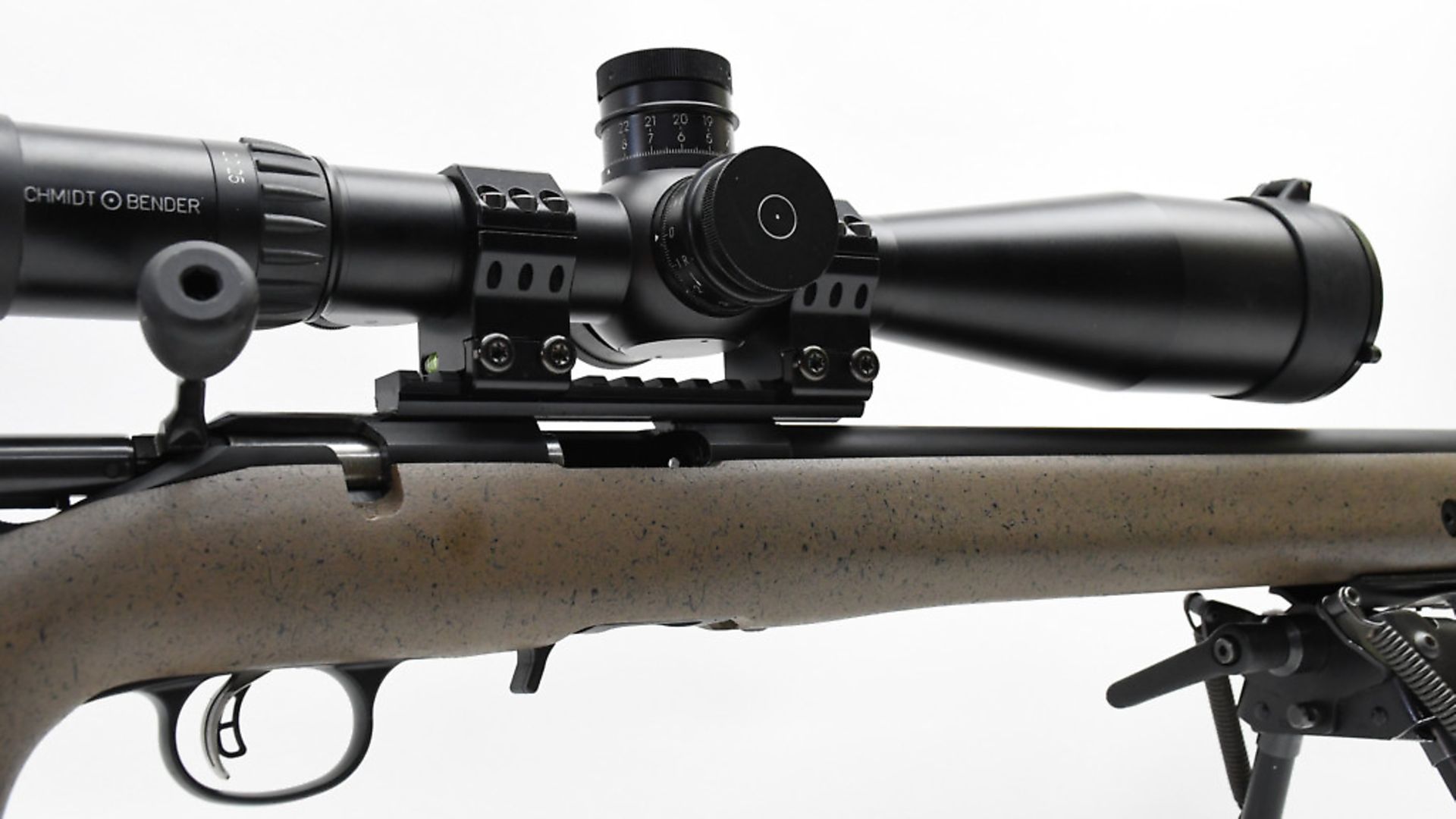 credit: Archant
credit: Archant
After waiting so many years for full-sized rimfire rifles, it’s been great to see so many options arriving from manufacturers in the US and Europe/Scandinavia. These are ideally suited to those wanting a full-sized training rifle to complement their ‘centrefire twin’ (like the Bergara B14 and Tikka T3/T1 UPR) or in their own right as a competitive rifle. It must not be forgotten that these lightweight rimfires still make great plinking and vermin control tools at the same time, often with far superior ergonomics to cramped sporters with short length of pull and reach to trigger, so what’s not to like?
I’m certainly a fan, and each new manufacturer’s variant has been pleasantly refreshing to test. Some are better than others but here, Ruger have paired an action I was already familiar with, the American, with a stock I rather liked last October, from the .300 Win Mag Hawkeye M77 variant.
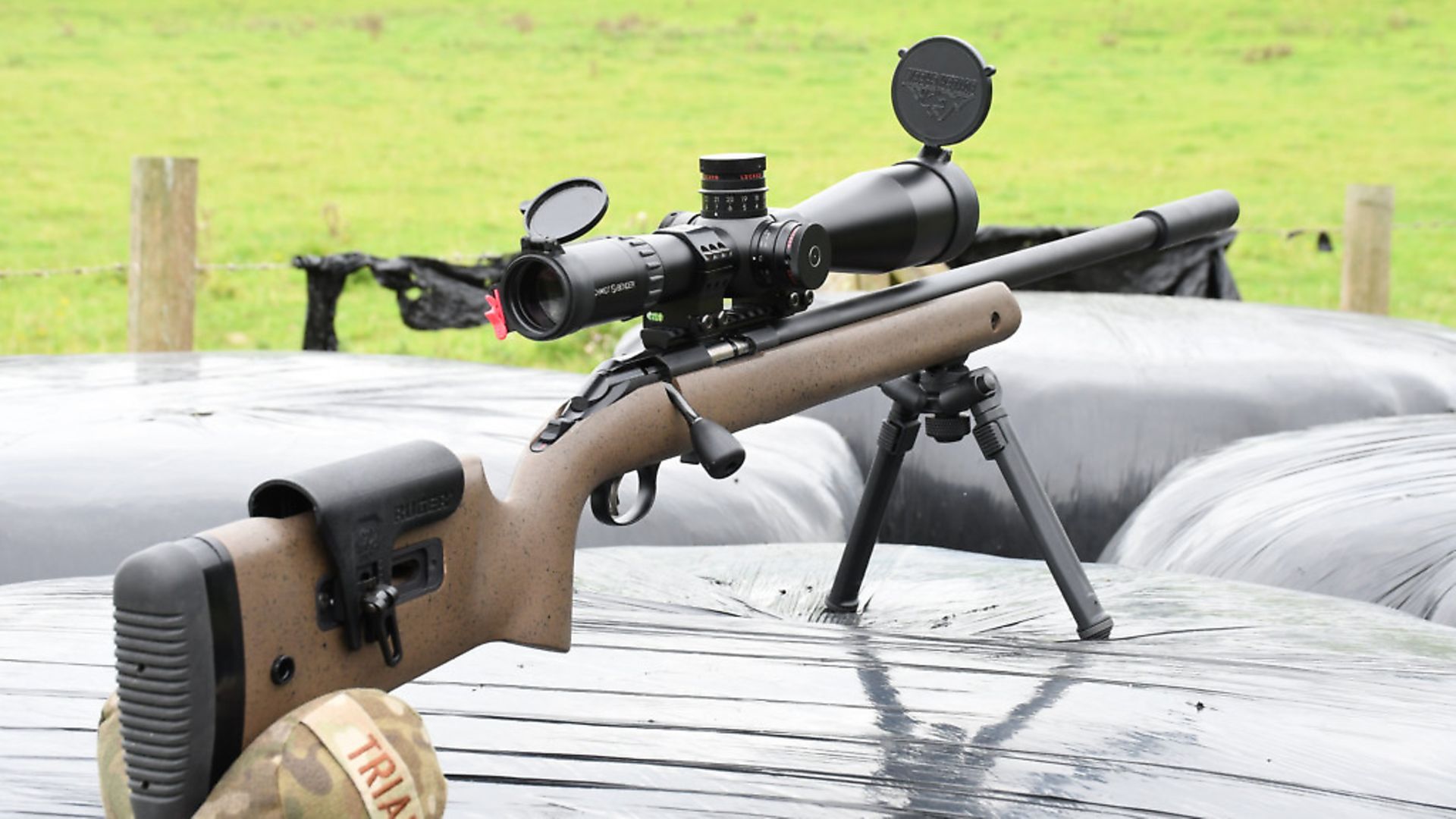 credit: Archant
credit: Archant
First impressions
Any stock that feels good to shoot on a heavier-recoiling cartridge will translate well to smaller cartridges as long as it’s not overly bulky or heavy, like a chassis rifle can be, so guess what? Straight from the box I quite liked this test gun.
I combined the rifle with a Schmidt & Bender PMII scope because a 20 M.O.A. rail was pre-installed and I was finally confident I had all the ingredients to really push rimfire ranges, with generous elevation from the optic and the onboard rail.
Well, I zeroed the scope and found very little elevation remaining, so I had another look at the rifle, in more detail this time.
I review guns as they are delivered. It aligns me to what any regular or novice buyer might experience direct from their gun shop and guess what? The rail had been installed backwards. Thankfully, I carry tools in the truck and it just took a couple of minutes to spin out the four T10 Torx retaining screws and reinstall but still, would every buyer find things quite so straightforward?
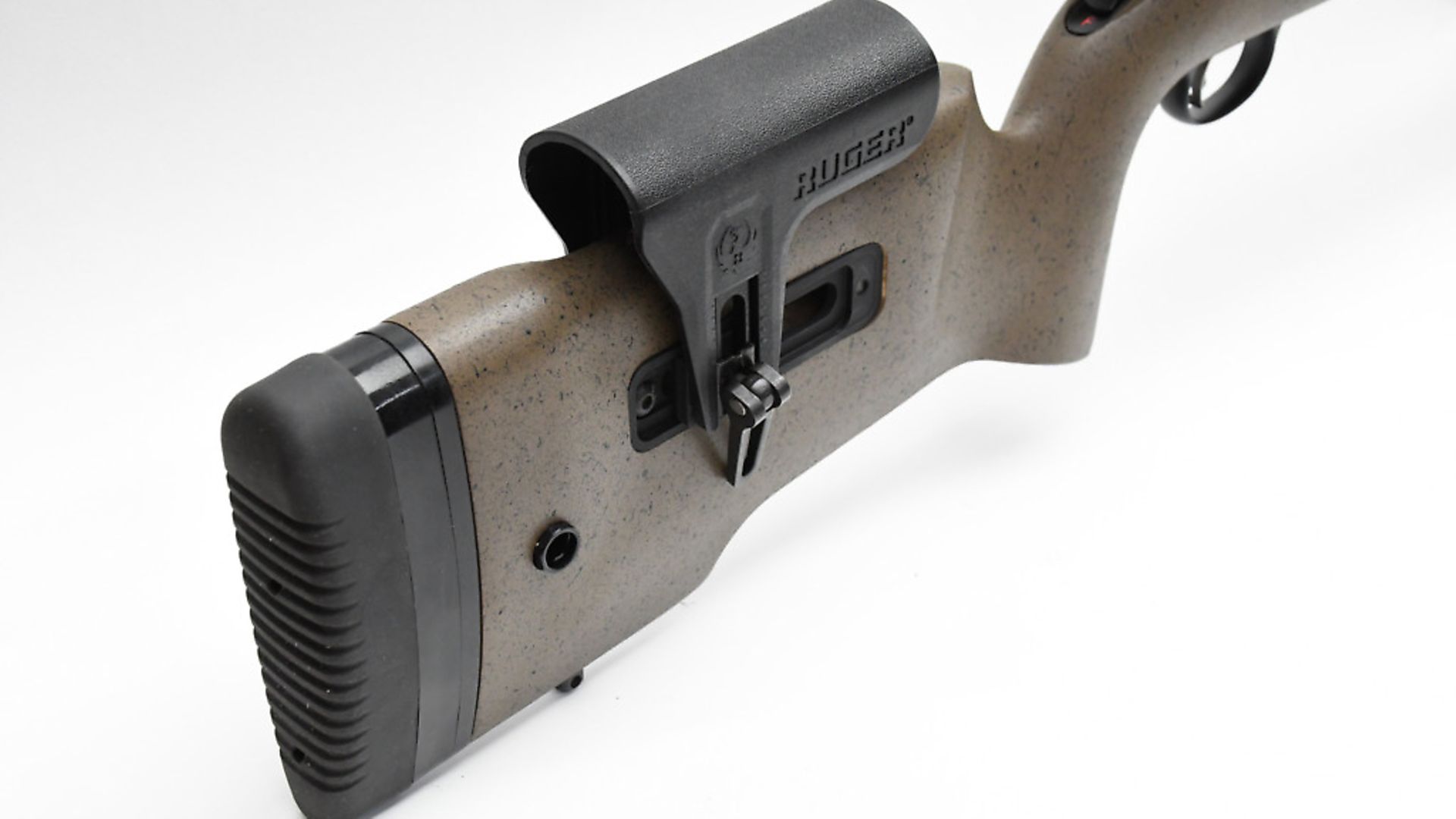 credit: Archant
credit: Archant
Stock
The black/tan stock is attractive and of a composite build. It avoids rattles and clunks, with no firing resonance. The butt pad features spacers packing it’s length of pull to 13.5”/343mm which is easily added to.
The pad itself is ribbed and grips the shoulder pocket well. It has a firm consistency and allows you to gauge shoulder contact and direct pressure when loading the bipod.
A toggle on the right side of the otherwise ambidextrous stock, (the toggle can be switched left side) allows quick unlatching of the adjustable cheekpiece with masses of vertical and linear adjustment – not as critical here because the bolt can be removed regardless of cheekpiece position. It’s of the broader variety and non-laterally adjustable so I would keep it a little lower and add something slightly narrower on it to engage under my cheekbone without rolling the head, offsetting the jaw to fully personalise it. Still, great for a rimfire.
I liked the tactile stippled finish throughout the stock and the grip’s vertical position with easy thumb ‘up or wrapped’ layout with an excellent shape and without too much angularity in the neck. Also, there’s plenty of space for all fingers to fit and wrap it. Moving forward, the linear projection of the stock is sleek and looks good, with a seamless swell around the magazine well, before the sidewalls, which have slight finger ribs with a delicate beavertail shape and flat bag-riding underside.
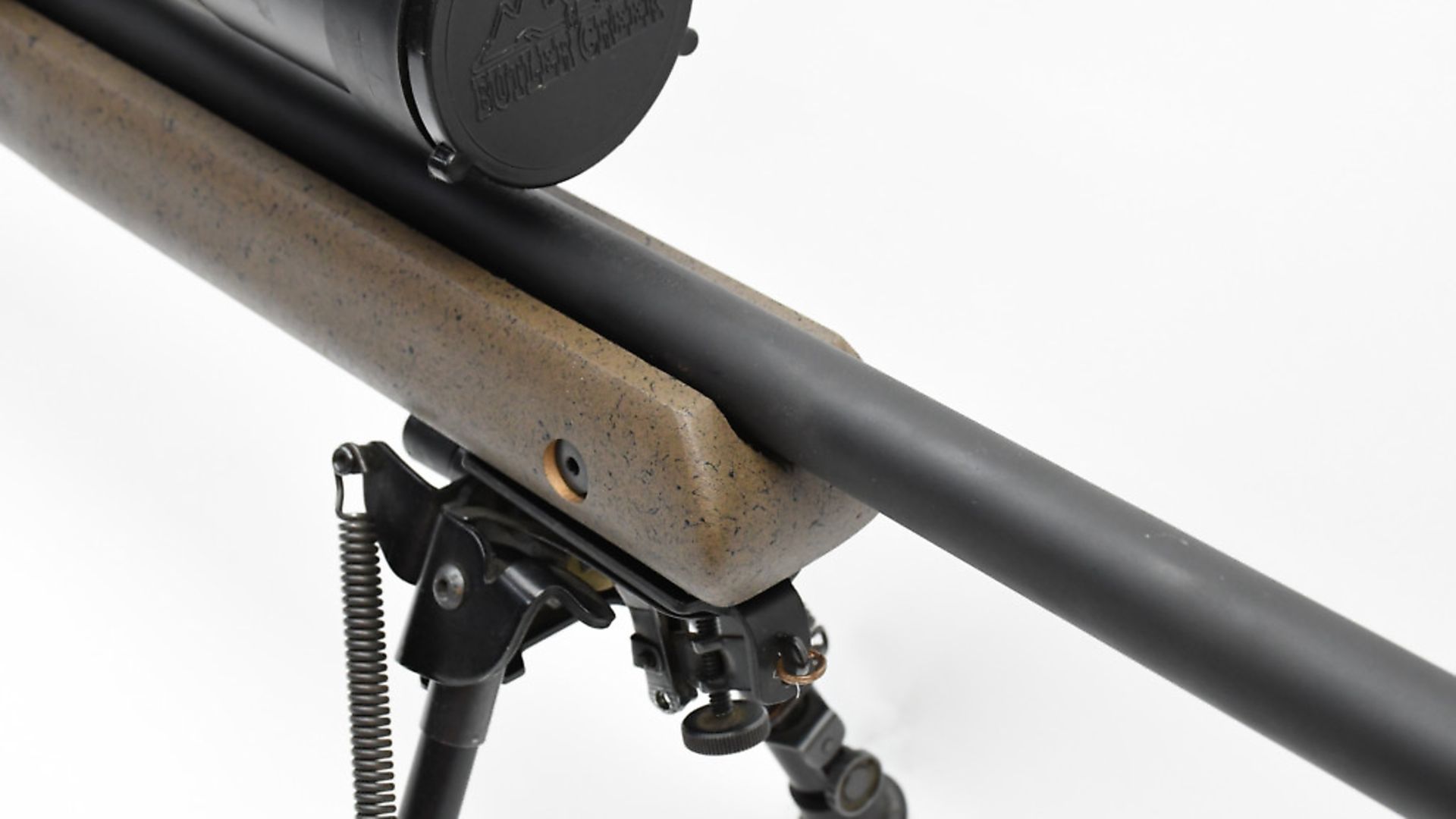 credit: Archant
credit: Archant
Mounting/accessory options
A full-length aluminium M-Lok accessory rail is embedded with three solid Allen bolts locking it to the stock. The rail is an extended unit and in hindsight, it’s easy to see how someone assembling the rig would see it looks a better shape to match the action’s profile when on the opposite way round (as mentioned earlier in this review), yet when installed correctly, it overhangs to the front of the action onto the barrel. This is to give plentiful scope-mounting space for any optic; especially helpful on a large scope like the 5-25 PMII which only requires 90mm of eye relief. It’s worth remembering a lot of mid-range scopes like to promise 100mm ‘magnum-proof’ eye relief and it’s not always a benefit on rifles with short actions, so after a quick re-zero, I was in business.
A single QR sling cup is installed at the front right but can be swapped to the left side and there are two on the butt just ahead of the recoil pad. The underside features a conventional stud in the centre of the bag-rider which can be removed if needed for free recoil, although I don’t mind them so much on a soft bag as it tends to add a little grip. The scallop shaping ahead provides lots of hand space to manipulate such a bag for fine elevation control, although there’s not much of a ‘hook’ shape to engage the web of your palm, making it harder to pin into your shoulder pocket. That‘s one of the reasons I liked the sling stud still in place.
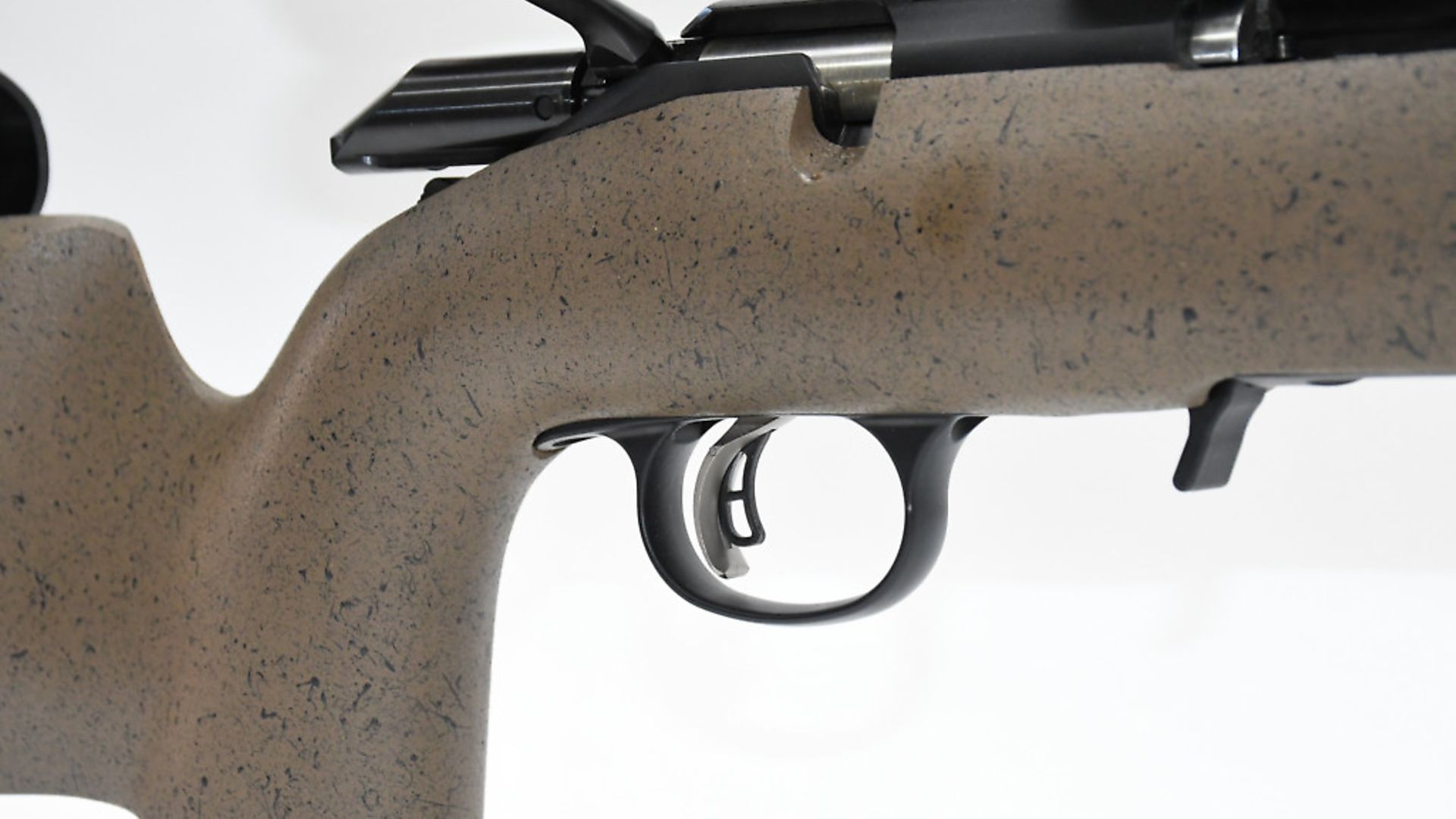 credit: Archant
credit: Archant
Trigger
The trigger guard is quite slim and less oversized than a hunting rifle. The ‘Marksman’ trigger features an inner blade safety and gives a very consistent 2.7lbs break, with a slight creep although no discernible grittiness. It’s not a glass break but I never found that an issue and it can be adjusted up to 5lbs with an Allen key, but only after removal from the stock.
The blade is broad with a slight curve and offers good reach, with 85mm from the throat of the following pistol grip, which I found added further delight to the overall ergonomics.
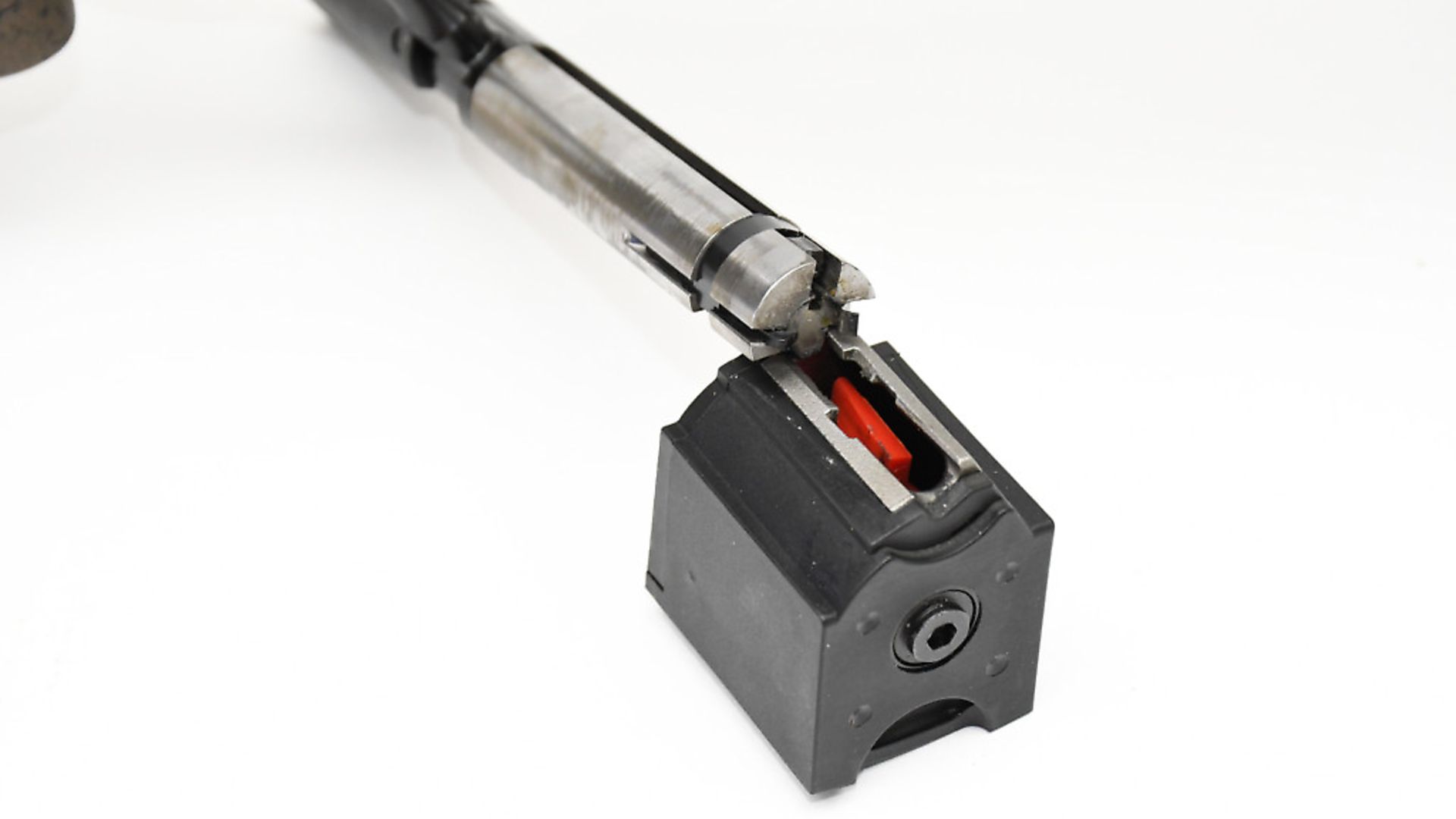 credit: Archant
credit: Archant
Magazine
The magazine release catch hangs just ahead. A light pressure is all that’s needed to release the Ruger BX-10 rotary magazine which will drop freely into your hand. Reinsertion is similarly unhindered with mis-positioning impossible.
Ruger’s BX-25 will also fit the gun for a banana-like 25-round capacity. It’s worth noting that Ruger’s 10-round rotary mag soon eases in spring tension and becomes fast to load; they are easily dismantled for maintenance. In a semi-auto 10-22, they need this regularly because the gas blowback action and spring-loaded bolt do a fantastic job of littering lead, lube and soot all over them. In contrast, the bolt action’s smooth feed hardly deposited a flake of debris and the system was more easily used with several hundred rounds through the test hardly disturbing its box-fresh appearance.
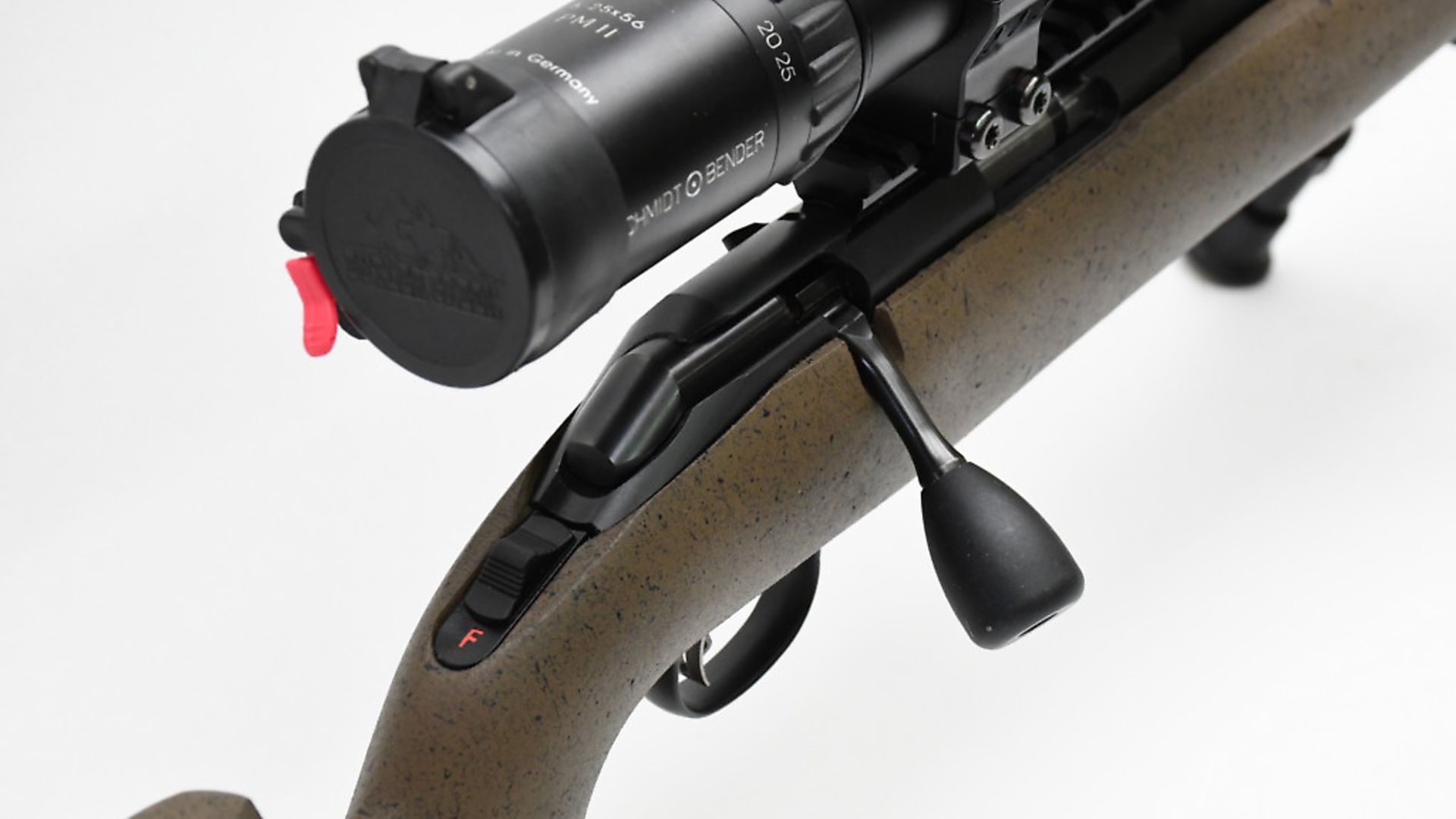 credit: Archant
credit: Archant
Bolt action
Bolt operation is from a bulbous teardrop handle extending 65mm from the shaft with a well-supported 40mm cyclical stroke length. The shape and dimensions lead to smooth operation with no jamming or binding issues, for which I genuinely applaud Ruger. They didn’t fall into the trap of a long ‘Tacticool’ bolt handle that hinders performance.
The bolt handle itself is the single lug of the rear locking action’s 60-degree lift. A single raceway is machined into the 17mm bright steel shaft to engage the anti-rotation/release catch on the left side of the action, with an overall fit and feel that comes somewh re in the middle of ‘tight versus rattly’.
A conventional control-feed face on the bolt allows single rounds to lift from the magazine below the twin extractor/ejector claws either side of the recessed bolt face. I de-cocked the bolt to assure myself of an effective firing pin exposing itself and was delighted to see a good chisel-shaped tip on the Ruger’s, which never once failed to initiate a round on test.
The left side bolt face claw is a sprung steel lever which collaborates with the fixed ejector claw to the rear of the magazine. This emerges from under the bolt (it’s part of the bedding block) as it’s drawn back and you get positive lateral ejection, unhindered by the full-length Picatinny rail enclosing the top of the ejection port. This is important because older actions like the CZ452 can suffer badly with ejected brass bouncing back from a full-length rail and causing jams. Finishing off the controls is a two-position tang safety catch with forward for fire, rear for safe, which is easily accessible and quiet to operate with the firing hand’s thumb.
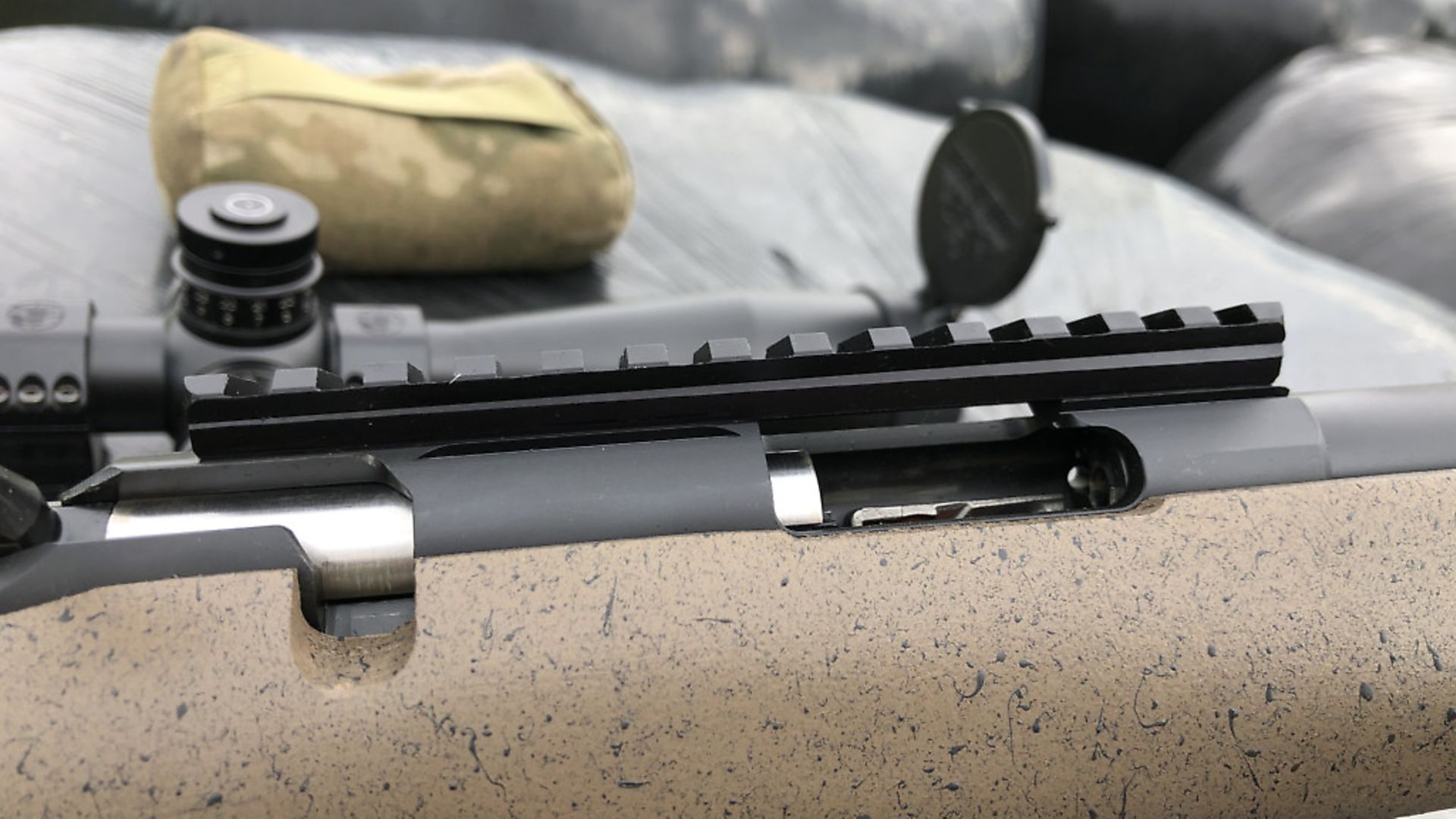 credit: Archant
credit: Archant
Practical shooting test
Some years ago Viking Arms gave me 1000 rounds of SK Standard Plus target ammunition for .22 rimfire and I have faithfully used it and commented on it when applicable. I’m now at the end of the supply because I shot every last one through the Ruger. Like many other rifles, it rather liked SK’s economical offering.
For once I didn’t do a primary zero at 50 metres as I would with a rimfire sporter, I went straight to 100 metres and since I was printing groups in the 20-30mm spatter for TEN shots on occasion, I was immediately enthusiastic to use this rifle at longer ranges. Muzzle velocities were a little lower than optimum. I think a 16-18” barrel for .22 rimfire is perfect because the long 22” tube saw muzzle velocity drop to 1032fps from the more usual 1060-80 I prefer. Using .22 rimfire at longer ranges is tricky enough and I’d rather have all possible speed.
150 metres was a great start with 10 rounds splashing well within 100mm groups on steel, the wind taking its toll in gusty conditions. The big Schmidt & Bender had over 20 mRad of elevation available after zeroing and this would have allowed me beyond 300 metres but I stayed within 250m on a 150mm gong for the sake of my own ego given the wind.
My mischievous mind likes to investigate marketing claims of newly patented features. An example being Ruger’s “Power Bedding, Integral Bedding Block System”. This block is in fact TWO pieces of cast aluminium seated into relevant pockets within the stock’s machined inlet to locate the action screws between the frontal escutcheon, and trigger guard assemblies.
Tubular pillars are inserted to prevent compression and the front block locks snug into the stock and tight into a V-groove at the front of the 27mm diameter action. The rear block floats more freely in the stock and is not locked tightly in position, it mainly attends to location for the magazine system and ejector.
Although the rifle shot well, it must be remembered that these ideas, although great marketing tools, are done for the price of the rifle and its manufacturing needs, because when tensioned, the action screws did stress the action, a factor to be attended to for the best target performance.
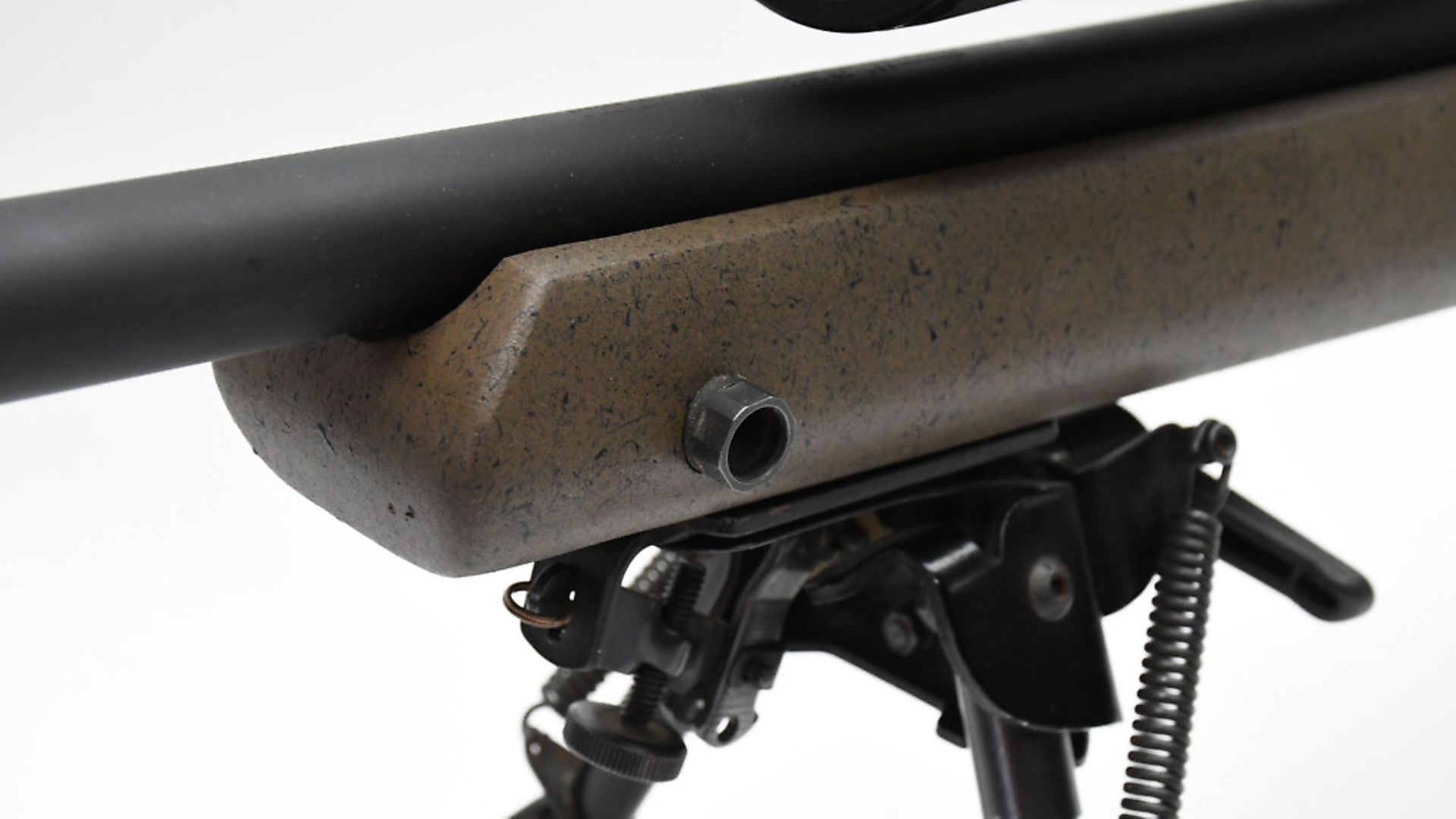 credit: Archant
credit: Archant
Conclusions
For a serious target-oriented rifle, it is always best to have a gun properly bedded and nothing has ever diminished that belief for me. Take any gun in and out of its stock, re-apply consistent bolt tension and see how closely it will hold zero. It’s also interesting to consider the relative stiffness of a large scope versus a thin action with magazine feed and ejection port cutouts, all bolted to a less rigid stock. Which is likely to be the stiffest component? I can tell you a large scope often holds the Ace on that one in the rimfire world!
The Ruger is rather a nice rifle for the price and I really enjoyed shooting it. It offers fundamentally sound shootability and economics with smooth magazine feeding that won’t damage your soft lead bullets, alongside the familiarity of a centrefire. Blindfolded, you might not instantly notice the difference.
Shooting from prone and bench-rested seated positions, using a Magpul M-Lok bipod or a rest bag, saw a rifle ready to go. Bolt manipulation was light and required minimal movement with only fingertip strength required, allowing the head to stay put and keep the firing cycle consistent. This allows you to watch the bullet land and thereby spend less time re-acquiring targets after recoil, thereby building muscle memory!
The trigger was predictable, with a good reach, encouraging linear pressure for a clean break on each shot. I could load the bipod with shoulder pressure consistently, enjoying minimal vertical group dispersion at longer ranges (sub 50mm at 150 metres was very pleasing). There was no flex in the fully free-floating fore-end, so the 17.1mm/0.86” hammer-forged barrel was free to do its own thing without harmonic interruptions.
It comes threaded ½”x28, so a moderator was a straightforward fit for all day shooting comfort without ear defenders, which is obviously equally important for hunting when switching disciplines.
I’m really no fan of high velocity .22 rimfire ammo for anything other than short-range semi-autos – subsonic match ammo is the way to reach out beyond the unavoidable transonic issues with higher velocity rounds at long range.
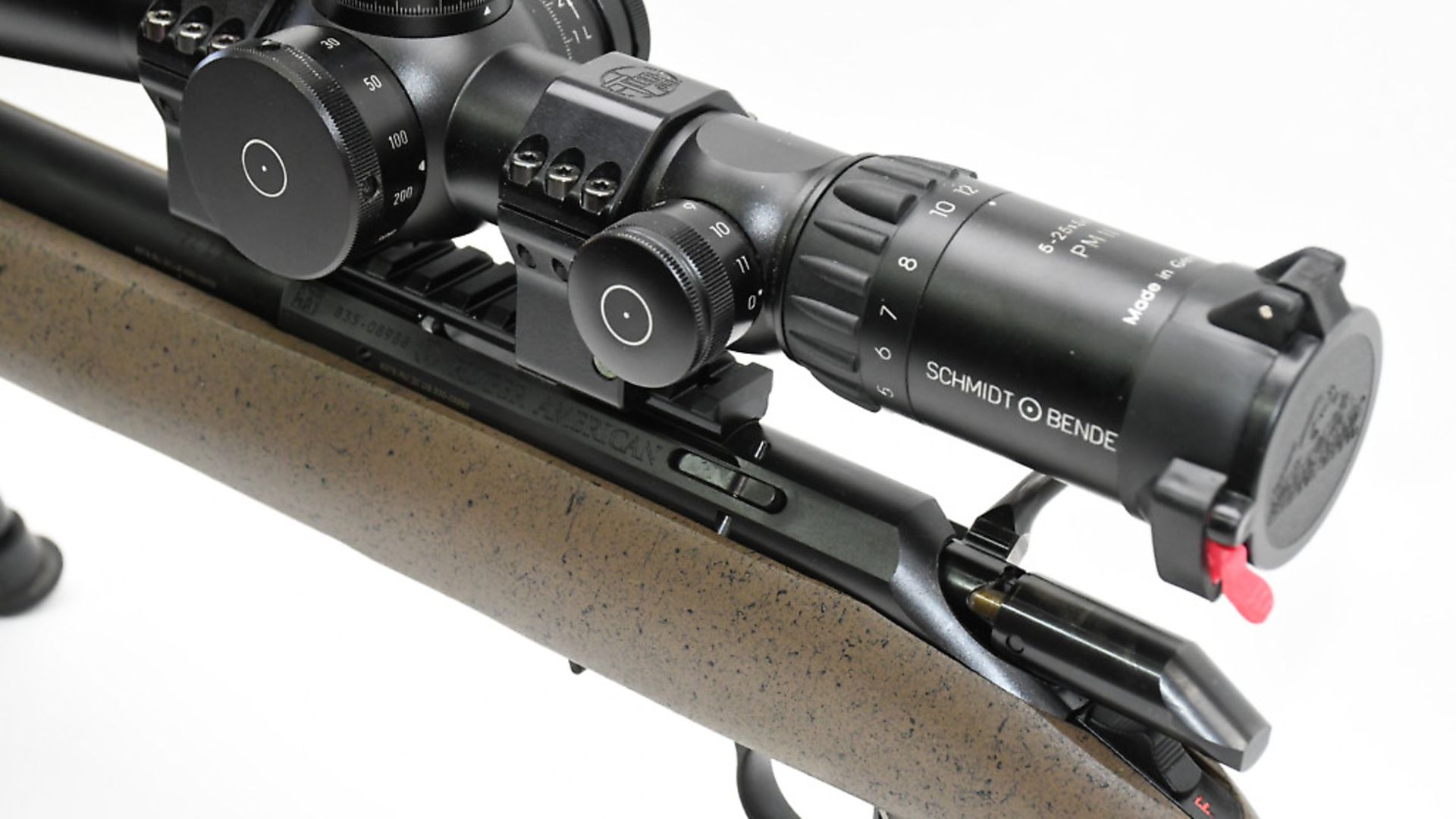 credit: Archant
credit: Archant
Pros
- Ideal setup for pushing rimfire to longer ranges
- Reliably smooth magazine performance
- Great scope positioning options
- Safe yet refined trigger
Cons
- Broad cheekpiece
- “Power Bedding” is more of a marketing tool than accuracy benefit
Verdict
- I have yet to experience a bad Ruger bolt action rifle, there’s some peaks in the range but all have been shooters and this, like other ‘Americans’, has been well specified at an attractive price for its intended market. Well worth a look and worthy of personalisation.
Tech specs
Manufacturer: Ruger American
Model: Rimfire Long-Range Target .22 LR
Overall length: 40.5”/1030mm
Weight: 8lbs/3.6kg
Magazine capacity: Detachable 10+1, 25 round also available
Trigger: Single stage, 1260gr/44oz. 9Adjustable up to 2200gr/80oz.)
Barrel length: 22”/560mm
Metal Finish & stock material: Matt Blacked Steel & Black/Tan Composite
Sights: 20 M.O.A. Picatinny rail included for scope fitting.
RRP: £780
Contact: Viking Arms
Also used
Schmidt & Bender 5-25 PMII: www.schmidt-bender.com
DPT Sound Moderator: www.dpteuro.co.uk
Magpul M-Lok Bipod: www.edgarbrothers.com
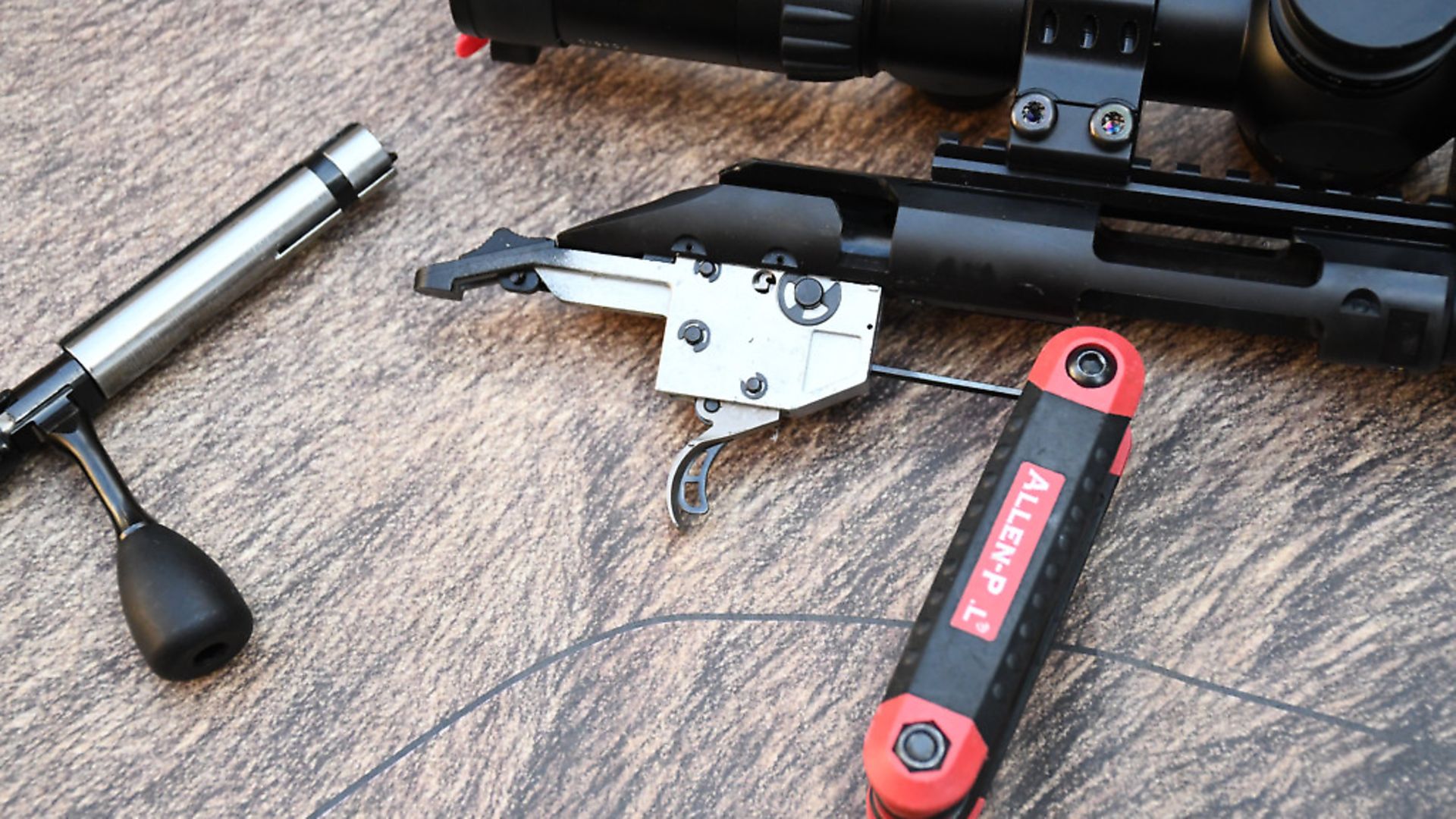 credit: Archant
credit: Archant
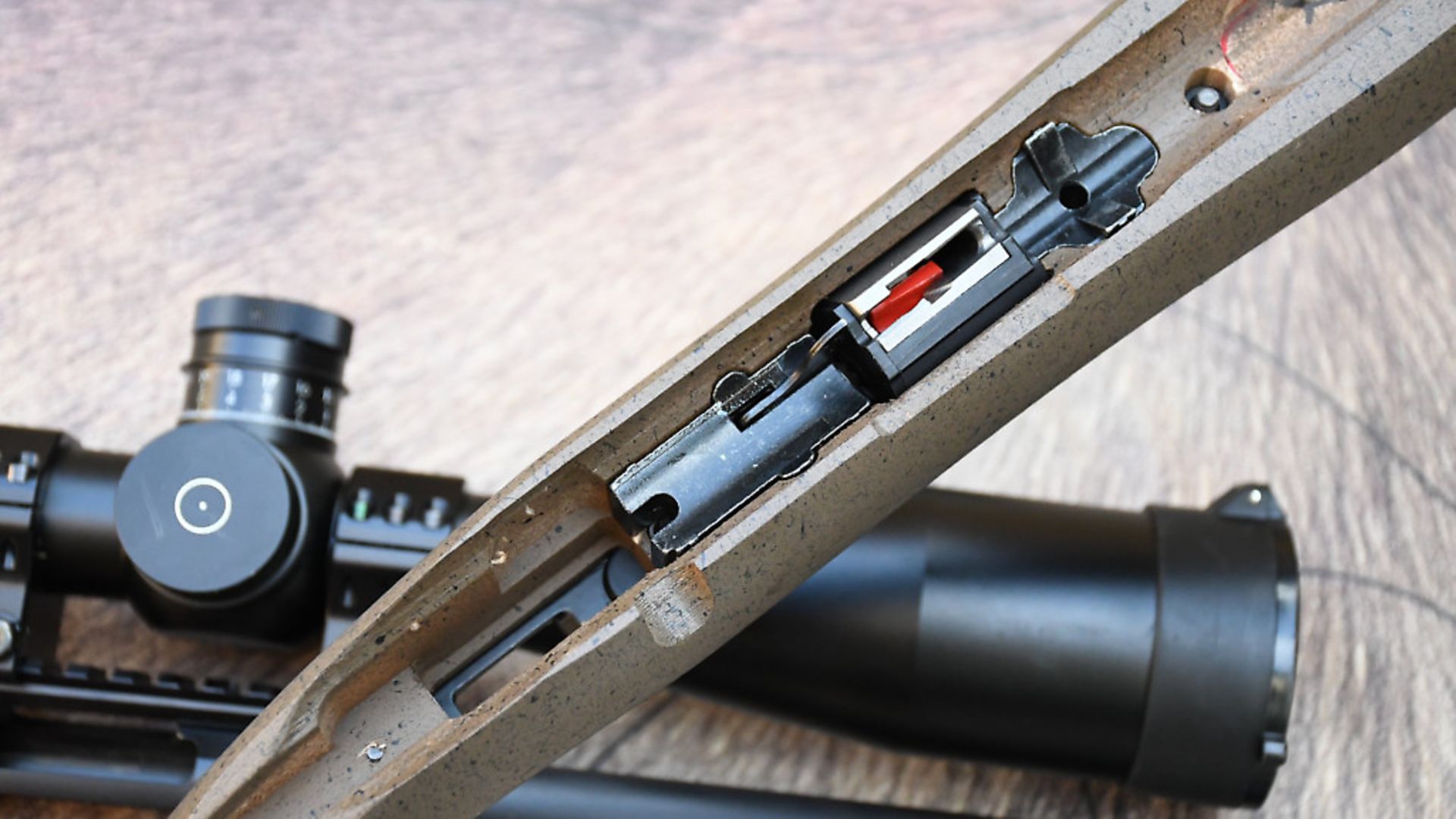 credit: Archant
credit: Archant